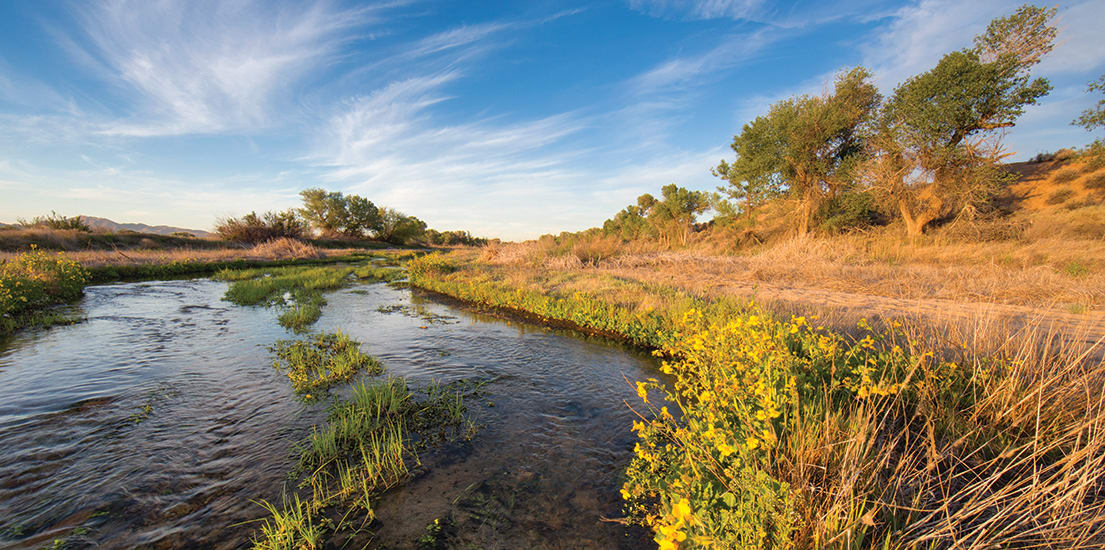Western Rivers Conservancy has a rare opportunity to conserve an important stretch of California’s Mojave River, one of the Golden State’s most imperiled streams. Often referred to as a “river upside down,” the Mojave flows subsurface for much of its length. The river sustains the only significant riparian habitat in the western Mojave Desert, and its water, whether underground or on the surface, is crucial to the rare fish and wildlife that rely on it.
At the same time, human communities rely on the Mojave, and explosive growth around Los Angeles and Las Vegas is putting intense pressure on the stream. The Mojave Basin’s groundwater has been in overdraft for decades, and excessive water withdrawals, combined with rapid urbanization, are threatening the fragile Mojave River ecosystem more than ever.
WRC is focusing its effort on a stretch of river known as the Transition Zone, located between the cities of Apple Valley and Helendale. Along this reach of the river, the Mojave creates a lush oasis in the desert, nourishing a 15-mile-long riparian corridor of cottonwood and black willow trees. Here, we are working to purchase a 1,640-acre parcel called the Palisades Ranch.
WRC’s acquisition of the ranch will protect four miles of the Mojave River and 700 acres of riparian lands in an area that is threatened with dense residential development. The project is key to the recovery of imperiled species like the southwestern willow flycatcher, least Bell’s vireo and Mojave tui chub (all endangered), as well as the threatened western yellow-billed cuckoo.
Conservation of the property will benefit migratory birds and several California species of special concern, including the Mojave River vole, southwestern pond turtle, brown-crested flycatcher, long-eared owl, summer tanager, vermillion flycatcher, yellow warbler and the Mohave shoulderband snail. Upland habitat on the property also supports several listed species, including desert tortoise, Mohave ground squirrel and burrowing owl.
Like the desert through which it flows, the Mojave River is often defined more by the lack of water than the presence of it. Conserving those precious stretches of river, where water flows above ground, is a top priority for WRC—one that will benefit Southern California’s desert wildlife and those increasingly rare animals that call the Mojave home. WRC’s efforts will help ensure this river oasis stays with us forever.


